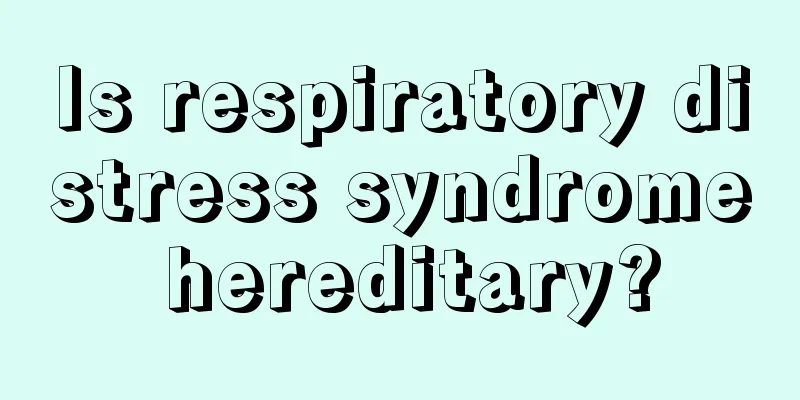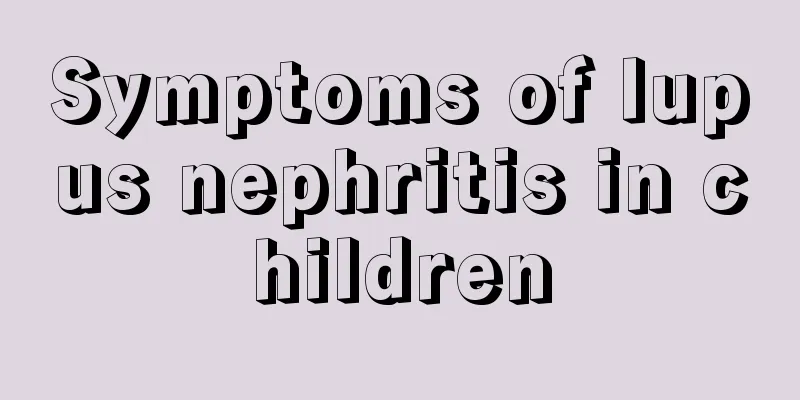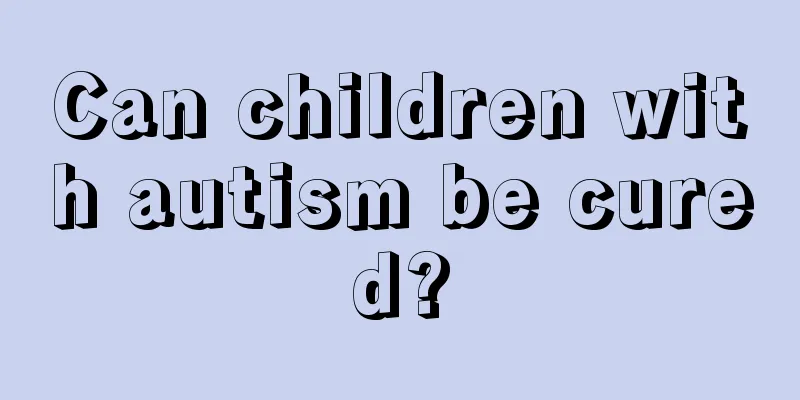Is respiratory distress syndrome hereditary?

|
Respiratory distress disorder is a disease that is quite harmful, especially for newborns. If respiratory distress occurs, the harm is quite great and it can easily lead to respiratory failure. Its mortality rate is relatively high. Generally speaking, respiratory distress disorder is not hereditary. If this happens, rescue should be carried out in time and good treatment should be given in time. Let's take a look at this aspect. What is neonatal respiratory distress syndrome Neonatal respiratory distress syndrome, also known as neonatal hyaline membrane disease. It refers to symptoms such as progressive dyspnea and respiratory failure that occur in newborns shortly after birth. It is mainly caused by a lack of alveolar surfactant, which leads to progressive alveolar collapse. The child will experience progressive dyspnea, groaning, cyanosis, and inspiratory retractions within 4-12 hours after birth. In severe cases, respiratory failure occurs. The incidence rate is related to gestational age. The younger the gestational age, the higher the incidence rate, and the lighter the weight, the higher the mortality rate. In addition, the incidence rate is also higher in babies born to diabetic mothers, babies delivered by caesarean section, the second baby of twins and male babies, multiple births, babies with intrauterine distress or asphyxia, and those with a genetic history. Neonatal respiratory distress syndrome can be divided into broad and narrow meanings. The former refers to any respiratory distress symptoms regardless of the cause, and the latter refers to respiratory distress caused by lack of pulmonary surfactant. NRDS mainly occurs in premature infants. Its main clinical manifestation is progressive dyspnea and its pathology is characterized by the appearance of eosinophilic hyaline membranes and atelectasis, so it is also called hyaline membrane disease.Neonatal respiratory distress syndrome refers to the condition in which a newborn has a brief (minutes to hours) period of natural breathing after birth, followed by progressive dyspnea, cyanosis, groaning and other acute respiratory distress symptoms and respiratory failure. It is more common in premature babies, low birth weight babies or post-term babies. The main lesion is the formation of hyaline membrane in the lungs of affected children, so it is also called neonatal hyaline membrane disease. Neonatal respiratory distress syndrome symptoms Cause: It is mainly caused by the lack of alveolar surfactant, which leads to progressive collapse of alveoli. Symptoms: Most of the affected infants are premature babies. Their cries may be normal when they are just born, but they will develop breathing difficulties within 6-12 hours, which will gradually worsen and be accompanied by groaning. Breathing is irregular with occasional apnea. The face becomes gray or bluish-gray due to lack of oxygen. After right-to-left shunting occurs, the cyanosis is obvious and cannot be alleviated by oxygen supply. People with severe hypoxia will suffer from low muscle tone in their limbs. Physical signs include flaring of the nostrils and a bulging chest cavity at first, followed by worsening atelectasis and a sinking chest cavity, which is more obvious in the armpits. When inhaling, the soft tissue of the chest cavity sinks, which is most obvious below the rib margin and the lower end of the sternum. Lung breath sounds are reduced, and fine moist rales can be heard during inspiration. This disease is a self-limiting disease. Those who can survive for more than three days have increased lung maturity and a greater hope of recovery. However, many infants develop pneumonia, which causes their condition to worsen and only improves after the infection is controlled. Most seriously ill infants die within three days, with the highest mortality rate on the second day after birth. It is more common in clinical premature infants. The baby may cry normally when just born, but then experience breathing difficulties, groaning, and irritability within 6-12 hours after birth. The symptoms gradually worsen, and in severe cases, sleep apnea occurs. The skin turns blue and gray due to lack of oxygen, and those with severe lack of oxygen will die within three days of birth.Milder cases have a later onset, which may occur around 24-48 hours after birth. The breathing difficulties are not obvious, and the degree of skin cyanosis is relatively mild. The condition will improve within three or four days after treatment. Neonatal respiratory distress syndrome is a self-limited disease. A self-limiting disease is one that recovers on its own, such as a cold. Neonatal respiratory distress syndrome is related to the degree of lung development. If the baby can survive for three days, The lungs will continue to develop during these three days, and as they mature, the hope for recovery increases. |
<<: The baby's temperature is 37 degrees for 2 weeks.
Recommend
What to do if children have dry stools
Dry stool is a very painful thing for both adults...
What to do if your baby refuses to eat
What should I do if my baby is picky about food a...
How to prevent babies from getting angry in spring
Spring is a very beautiful season with flowers bl...
How to treat viral herpes in children?
Herpes is caused by infection with the herpes vir...
How to deal with children's nasal mucus
Children have more nasal secretions and their nas...
Should children take anti-inflammatory drugs if they have a fever of 385?
It is a very common phenomenon for children to ha...
Correct sleeping position for newborns
Sleep occupies most of the baby's life, so go...
Symptoms of interstitial pneumonia in children, parents need to know in detail!
Children are a group that is susceptible to pneum...
What should I do if my baby has onychomycosis?
When a baby suffers from onychomycosis, parents b...
What to do if your newborn has a stuffy nose
Many people know that if their nose is blocked, i...
Is it okay for babies to use pacifiers?
Whether it is good for children to use pacifiers ...
Why does eczema appear on the wrists?
There are many patients with eczema in our lives....
What are the symptoms of mite allergy in children?
Children's skin is more sensitive than that o...
What should I do if my child has small red spots on his legs?
We all know that when the skin is allergic, many ...
What should I do if my child has trouble sleeping? 5 Tips to Help
Sleep is a big deal for children, because its qua...









